-
Posts
2163 -
Joined
-
Last visited
-
Days Won
20
Content Type
Profiles
Forums
Events
Gallery
Store
supertorial
Classifieds
Posts posted by Cold Summer
-
-
2 minutes ago, Cold Summer said:
Haven’t posted in a bit on this thread. Rocking some Stevenson Overall salt and pepper trousers I picked up recently from the Community Sale thread. Amazing fabric, sewing, details, fit. Gonna be wearing these a lot on days I feel like wearing not-jeans!
Freenote flannel / Flat Head jacket / Equus belt / Flat Head wallet / Stevenson Overall trousers / Wesco Mister Lou
Cross-post from WAYWT. I've always thought Stevenson jeans looked really cool but I feel like their sewing and design details really lend themselves well to pants like these. I feel this is one of the best-fitting pairs of pants I've worn, of any type. The waist is maybe an inch or so loose, but nothing a belt can't fix.
4 -
Haven’t posted in a bit on this thread. Rocking some Stevenson Overall salt and pepper trousers I picked up recently from the Community Sale thread. Amazing fabric, sewing, details, fit. Gonna be wearing these a lot on days I feel like wearing not-jeans!
Freenote flannel / Flat Head jacket / Equus belt / Flat Head wallet / Stevenson Overall trousers / Wesco Mister Lou
19 -
Virtually all TFH shirts are one-washed so they shouldn't shrink unless you absolutely blast them with a tumble dry. I've owned quite a few TFH shirts and never noticed any of them to shrink at all with a cold wash and hang drying.
Wonderful fades on those 5005s @el padre, you don't see those a lot around here but the 5000 series denim fades quite nicely.
2 -
I almost never saw anything over size 42 when I lived in Japan. It was pretty much just overseas retailers ordering bigger sizes than that.
However, since TFH reorganized a few years ago, everything seems to run a size bigger than before, so a 42 is more like a 44 in the "old" Flat Head. Still, I think this just highlights the size disparity in western vs. Japanese body types. Almost everybody I knew when I worked there wore a size 38, only one or two people as large as a 40.
0 -
Thanks guys. I'll have some more cool stuff for you soon!
0 -
I wouldn't exactly describe myself as having a "passion for my possessions." It's all just stuff that one day will fall apart, or get lost, or stolen, or whatever. But I do spend a lot of time in/using my clothes, which leads to more time observing/thinking about it. I have a nice electric bass that should be much more engaging than my denim jacket or whatever, but I hardly ever use or interact with it at this stage of life, so I'm generally pretty apathetic about it. Same goes for my car, I spend so little time driving that I could never be a "car guy." But I spend a lot of time wearing clothes. I guess to me, it makes sense that I'm going to scrutinize stuff that I use and experience the most.
It's more like I'm trying to apply my OCD attention to detail to illuminate some aspects I think are compelling which hopefully leads to making more interesting content than just posting pictures and such. Particularly in this thread where there's not a lot of posting nowadays, I like to think sharing my impressions might give many people on here who have some TFH stuff from back in the day a newfound appreciation for it.
Especially when it comes to something like shirts; it feels like there's a ton of stuff out there on minor differences of 501XX jeans from different eras and how accurately/inaccurately particular details are reproduced, or changed. It's not that I don't find this interesting, but it's been pretty thoroughly explored at this point, and I guess I find that scrutinizing other stuff (like on shirts) is more interesting to me, and the justification behind why X shirt costs a lot of money seems to be "it's super heavy and Made In Japan, bro." Obviously I feel like there's a lot more to it than that, and that's what I've touched on a bit here. My polemic (if you can even call it that) is pretty mild compared to some prominent content-creators in the community who often present opinion as fact, and my impressions are based on direct comparison to things I've owned myself. Plus, in the post on the houndstooth shirt, at the end, I did say that this was just my opinion 😉
My interest in the denim hobby had pretty much stalled out until I discovered I could find lots of great stuff from the "golden age" of Flat Head and similar brands on Japanese auction and resale sites for often comically low prices (at least, on occasions when things in my size would come up for sale), in nice condition. Maybe this isn't relevant to everybody out there, but as a married guy with two kids, I don't have as much cash to spend on the clothing hobby as I once did, so I want to make my dollar go as far as it can, and get more for my money. This shouldn't come across as bragging either, as I did nothing special to get this stuff, not even really utilizing my Japanese language skills; I got almost everything through Buyee, an English-language site which consolidates Yahoo Auctions, Mercari, and others into a single proxy, where I just searched for stuff that interested me. I feel this aspect is more analogous to thrift store treasure hunting where finding cool stuff for cheap is part of the fun.
Anyway, in regards to sizing, this jacket runs small. Normally I'd wear a 42, which is my size in most TFH tops (though particularly in short sleeves a 40 often fits me just fine.) This is the only TFH thing in size 44 I've ever owned. 42 usually corresponds to a US Medium. Out of the Japanese brands TFH tends to fit me the best since I'm tall and slim, and prefer the western shirts and their detailing, but the "work" style shirts are generally much boxier and fit more like shirts from any other brand. TFH usually made both styles for a given fabric. I find that people are almost universally talking about the western shirts when criticizing Flat Head's cuts. A lot of other brands out there have very short sleeves for my chest/shoulder size, even if I size up, so I appreciate that Flat Head's general design works good for me.
That's actually a great question about the pockets and yoke on the houndstooth shirt. The body of the shirt features the fabric at a straight angle, while the pockets and yoke are slanted 45 and -45 degrees, where the left pocket matches the angle of the opposite/right side yoke, and the right pocket/left yoke, vice versa. I think it's probably done like this because it makes the design of the pockets and yoke more visually distinct, whereas if it was all matching the same direction as the body of the shirt it would all blend together. It's pretty normal for flannel shirts to have the pocket fabric at a 45/-45 degree angle, it's just less obvious that's what's going on here because it's a houndstooth fabric instead of a grid-like check pattern.
6 -
-
Here’s my Flat Head 6002W denim jacket in size 44. I bought it used off Yahoo Auctions Japan last summer. It showed some slight fading on the front placket, and some broken stitches on the “rectangles”holding down the pleats, but otherwise looked nearly new, with no signs of wear on the arms.
The denim felt stiff and crunchy after a cold wash. I’ve put about 2.5 months of actual wear into it, and it’s breaking in pretty much like a fresh jacket would.
This jacket is awesome, probably my favorite-fitting denim jacket I’ve worn so far. Thanks to the slightly wide shoulders, the sleeves are actually long enough, which is usually the issue I have with denim jackets. The chest measurement is just right, and the width of the body and sleeves likewise. I wish it was maybe an inch or so shorter in length, but it’s not a big deal.
The denim is Flat Head’s usual 14.5 oz, which lends itself well to a denim jacket. The weight is just right, and it’s well suited for pretty much all-season wear, over T-shirts, long sleeves, and flannels.
One somewhat surprising detail is the patch sewing. On every other 6002 I’ve seen, the patch is sewn with contrast stitching, the outline clearly visible on the back of the jacket, but this one is sewn with navy thread, making it “invisible” when seen from behind. I’m really curious why this was. Was the patch removed and re-sewn at some point? Why would somebody do that? There’s not actually any indication it was removed or “tampered” with, otherwise the jacket is just like any other TFH denim jackets I’ve seen/handled.
I’m not sure exactly when the jacket dates from. It has iron buttons so it’s not from earlier than the late 2000s when TFH switch from coated zinc (?) to their current iron buttons, but this model has been discontinued for a long time, so I’d guess early 2010s.
All in all, great jacket, especially for the price I paid (around $130 or so), well below typical for a new denim jacket from a Japanese brand. I’m sure their current production Type IIs are excellent as well, but I especially like stuff from the “original” Flat Head era.
8 -
True, though also keep in mind that in recent times the USD/Yen exchange rate has been extremely favorable for us who often buy direct from Japan, but for many years over the past 10-15 or so, it hasn't been, so Japanese shirt prices were much higher all around at various points in the past. Also, for folks in places like Europe and Australia, when you do the math a nice shirt is often $300+ MSRP, so I think it's still broadly applicable.
1 -
Exactly, I had IH in mind but there are some others too. There are a lot of people out there with a lot of IH flannels, not just one or two.
I like nice shirts, obviously, but I tend to buy them used. Most of the TFH shirts I've picked up in the last couple years were used and less than $100.
0 -
Here’s my Flat Head FNW-61W shirt in size 42, which I recently picked up from eBay. I’d gotten another one of these from Japan a couple months ago, but it was a little small, so I was quite excited when one of these showed up in 42. For me, this is one of the best shirts Flat Head ever made, and that’s saying something.
In addition to being a beautiful and impressive shirt in its own right, it’s pretty significant because it was an integral part of early Self Edge history, being one of the first shirts they sold, and featured prominently in their first look book, which you can still see on their site. The way Self Edge and Superfuture adopted this shirt (for instance, Sidney Lo, who prominently wore it in his WAYWT photos) was pretty revolutionary, taking something which had rockabilly vibes in its original context, and basically turning it into streetwear. Of course I was still a few years away from discovering the exciting world of specialty denim back in 2007, but all this ended up being pretty influential in retrospect. The recent Self Edge editorial about the Imperial collab went into all this, and it was pretty insightful since I’d previously been stuck trying to piece it all together from reading old forum threads long after the fact.
My own approach is a little different, as I’m generally tucking it in and wearing with engineer boots and leather jackets for more of a “mid-century rancher gone off the rails” vibe, but I really appreciate how such a distinct-looking shirt can be dressed up or down into various styles.
The design of this shirt is really great, it has a single yoke pattern and slanted single-button pockets, similar to Flat Head’s 7001 denim shirt. Flat Head also offered this shirt over the years with various combinations of split yoke and sawtooth pockets, as well as a lot of different color combinations, but I think this original iteration, in the Ivory/Black colorway, is the very best. In the past, I owned the circa 2011 split yoke version of this shirt, and the Ivory/Green one. I ended up regretting selling both of them, but this one makes up for it.
This shirt has all the goodies you know and love from Flat Head: a custom houndstooth flannel woven on a shuttle loom, 100% cotton stitching, and terrific sewing courtesy of double-needle chain stitching and single-needle accents at the pockets and yoke. It features a ton of felled seams, and selvedge side gussets. I don’t know this for certain but it was probably made by Nakajima Housei, the Gunma prefecture sewing factory that made most of Flat Head’s shirts.
The sewing is one of the areas where Flat Head really shines. When you compare to something like an Iron Heart flannel, Flat Head shirts have a distinctly “hand-made” sort of feel, between the vintage machinery and techniques used, and the all-cotton stitching. The double-needle parts of the shirt have a bulge between the stitches, giving a pleasing three-dimensional touch, and the pattern alignment is extremely impressive and well done as well. Flat Head always excels at this, and it’s really on display with a shirt like this, which has such a bold, distinct pattern.
The shirt features Flat Head’s “Original Wear” serif name tag at the collar, rather than their shorthorn Western Wear tag, which is maybe a bit surprising, but I think the shorthorn tag was only used for non-flannel shirts, which could explain it. Usually the snaps are branded Universal, but these say Crown; they may be a Universal reproduction of a specific vintage snap. The buttons are a dark mother-of-pearl sort material with a distinct, deep green sheen depending on how the light hits, pretty hard to capture in photographs. This early version had a two-button cuff, while the subsequent iterations over the next couple of years had three. All the buttons snap hard, with no sign of wearing out anytime soon.
In 2013 Flat Head redesigned their houndstooth flannel with a bigger pattern, heavier weight, and brushed interior, which made it feel quite similar to an Iron Heart flannel. I owned the Turquoise/Ivory western, which I got when I worked for them in 2013-14. Although exciting at the time, since then I’ve decided that this original iteration was much better and I wish they’d bring it back.
If you go back and read the early Flat Head and Self Edge threads it was pretty controversial when a casual shirt showed up costing $150+ and a lot of people weren’t convinced. It seems pretty quaint now, where it’s almost normal in this sphere to spend $350 on a shirt. But in my opinion, this shirt is better designed and more interesting than those pricier new shirts. Here’s my advice if you see one of these shirts come up for sale in your size: get it.
12 -
-
Flat Head also makes some extremely heavy flannels. The second version of their houndstooth flannel from 2013 onward (which has a larger pattern than the original) feels very much like an IH flannel. 3Sixteen has also made some very heavy ones.
Either of these can be found fairly frequently secondhand, for a whole lot less than Iron Heart as well.
UES is very well made and has nice patterns but they’re some of the worst fitting shirts I’ve worn, with large bulky collars and huge necks, just looked awful on me. But your case may vary.
1 -
- Popular Post
- Popular Post
-
13 hours ago, CSL said:
Finally got myself a Flat Head shirt.
FW cap
Companion
Dunrite Belt/vintage buckle/Hollows key gizmo
Lofgren
Beautiful shirt and all around great outfit!
1 -
@yung_flynn Good observations. Those "relaxed tapered" cuts are really made for big guys who want a proportionally smaller hem. If you wear a size 34-36 waist there's a good argument for jeans like that, which will give you maybe 8-8.5" hems while a straight leg fit is around 10" and extremely wide. But in my size those tapered fits are usually something like 6.75" with a 12.5" or larger thigh and look completely ridiculous. I can see why a guy would need more room than me in the top block, but not why they'd want such a tiny hem. To me these jeans seem like they negatively emphasize one's midsection, especially in the smaller sizes where you don't need all that taper.
All this raises what is, to me, an obvious question: why don't jean makers offer at least some models by hem size? For instance, a "22 cm" pair that's a pretty classic 8.5" hem, and as the waist size goes up, the top block and thigh get roomier, and taper proportionally increases while the hem stays about the same. Even better if the rise is also pretty consistent (let's say, 11.5-12" or so in the front), and only when you go down to size 29 or smaller does it scale down a bit.
1 -
@yung_flynn There's barely any wear on the crotch, since I have slim thighs there's very little pressure put on them. The only pairs where I had any substantial crotch fraying were very tight-fitting slim tapered jeans of the sort I no longer wear, like the 3Sixteen ST-120x and RH15. Maybe also my Full Count 1108, which is at about 13 months of rear wear, and has quite a slim top thigh.
Anyway, on my 1001xx, the knees and rear end will wear out and require darning long, long before the crotch will, on my straight fit jeans. I suspect my 1001s will need knee/butt repairs within three months of additional wear or less.
1 -
@super-thermite I also posted my 1001xx in Banner denim in the Evolution Of Jeans thread recently, at nine months of wear and several washes. Incredible denim, one of the best I've worn, and extremely comfortable and well suited to warm weather wear, which is a bonus since I live in a place that's hot much of the year.
1 -
-
I've bought enough jeans online from various places to generally know what's going to work and what isn't when it comes to measurements, especially when I cross-reference a couple different places' measurements. Aside from the longer rise, the legs appear to be in line with other pairs that have fit me great like Warehouse 800xx, 1001xx. Back when I had my Dawson Regular Fit jeans, those had a similar high rise which I really liked - but they were a little too tight and slim in the top block. The 1966 should be similar rise, but with a bit more room.
What's interesting about my looser fitting straight pairs like Flat Head 3005 and Warehouse 1001xx is that they look and feel best when they're slouched a little bit - but that doesn't work well with tucking stuff in, where I have to hike them up a bit. The 1966 should feel a bit like those slouched straight fits, just with the waist sitting at a more appropriate height, which would seem to be the best of both worlds. We'll find out how good my fit prognostication skills are soon enough, I suppose.
The only really clunky fit I've had in years was the Samurai S3000vx, which is seriously boxy in the top block; the top thigh was bigger than any of my other pairs but really the main problem is just that the rise on those jeans is way too low for a WWII type jean, leading to all sorts of problems.
1 -
I've got a pair of 1966 on the way. First Sugar Cane jeans for me. I always tend to associate "66" type jeans with a low rise, roomy top block, and sharply-tapered leg, but this pair isn't like that at all. Actually, the fit is the whole reason I wanted these: since I usually tuck in my shirts nowadays, I find the rise on most jeans in my size (about 31" or so) disappointingly low for the purpose. This is maybe not surprising since I'm much taller than most people with a 31" waist. More "normal" proportioned guys of my height (about 6'3" / 191 cm) probably have a 34-36 waist. You go up to that size in any of the jeans I wear and you get 1-2" of additional rise. This would seem to make a big difference not just in terms of comfort, but also practical considerations like shirts I want tucked in, staying tucked in.
The 1966 doesn't have as many fancy details as I'm accustomed to enjoying, like rolled belt loops, rolled back pocket edges, hidden rivets, and so on. But the fit in a size 30 looks dead on. Much longer rise than my other jeans, and a straight leg just a little slimmer in the thigh, with a very mild taper to a 20 cm hem that can easily accommodate my engineer boots. There's a good chance these end up being the best-fitting jeans I've ever worn. The denim is obviously pretty modest, but I suspect that with my typical infrequent washing routine they'd fade as nicely as my other pairs. Another bonus: it looks like the most recent run of these has a very long inseam, almost 36" in one-wash form, which is also quite appealing. These were also very cheap, at under $150.
At this point I care less about very ostentatious denim and details or exclusive features and would rather just have a pretty classic pair of jeans that fits just how I want, and I'm pretty sure these will do just that. Of course I'll share pics and impressions once they get here. Some other SC models like the Okinawa, Hawaii, and 1955 also seem like they'd be good fits, but the 1966 seems like the best place to start.
4 -
- Popular Post
- Popular Post
-
-
Sounds interesting, I'll keep an eye out for those. Thanks for the advice/suggestions guys.
0



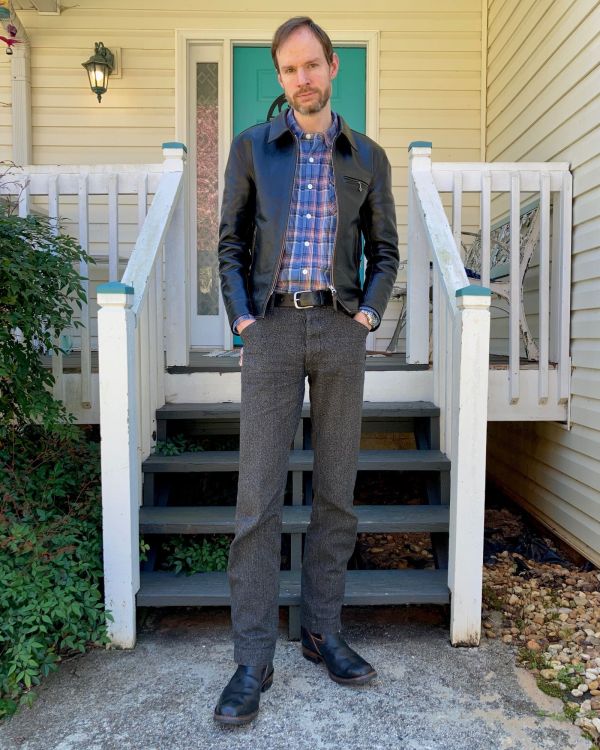
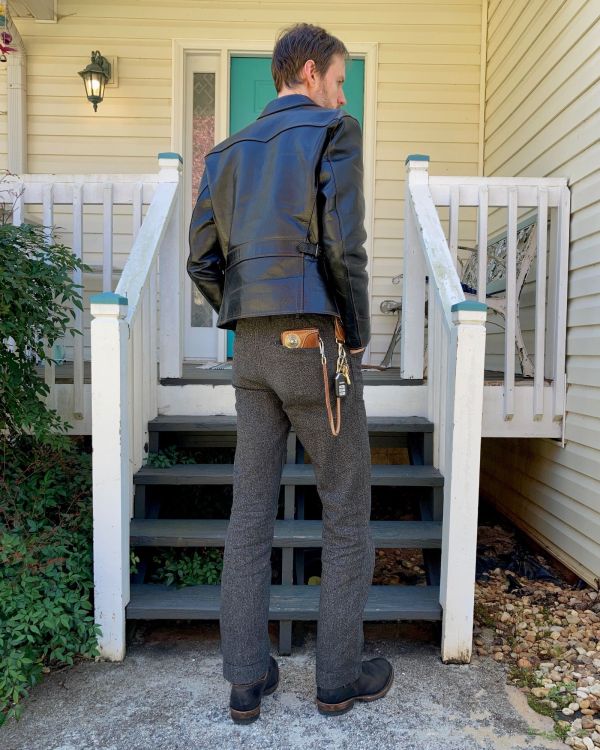
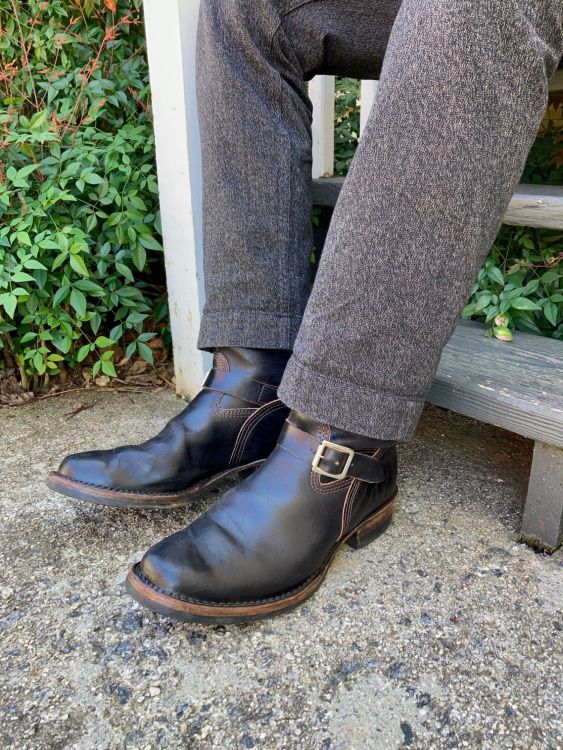
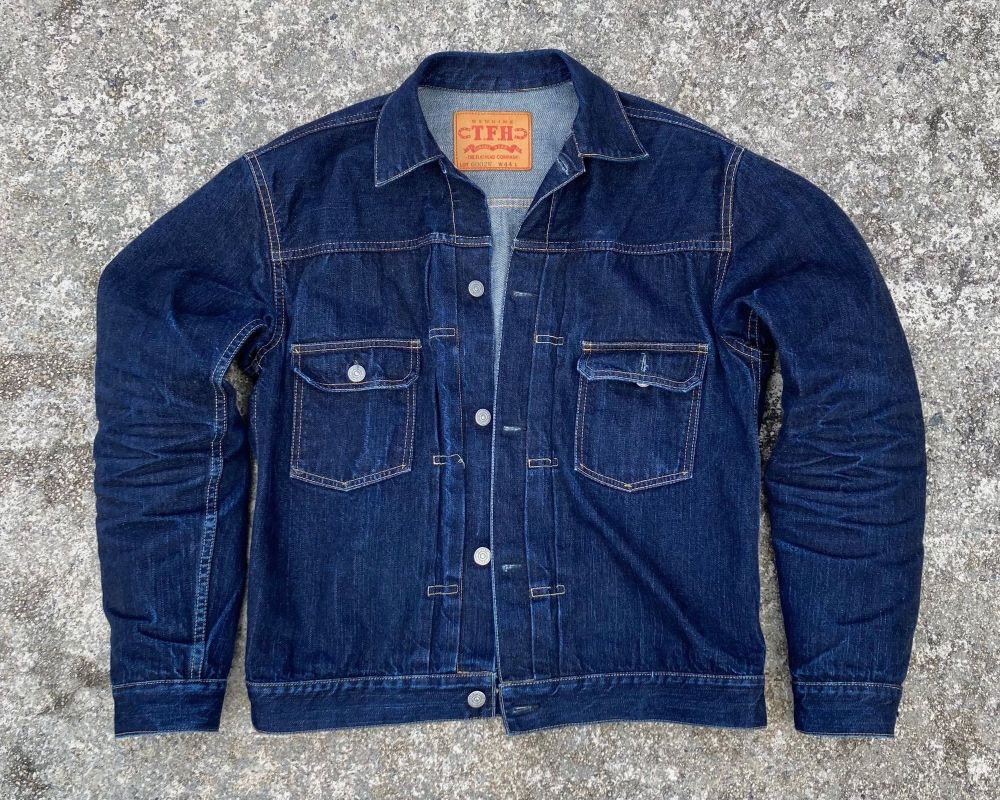
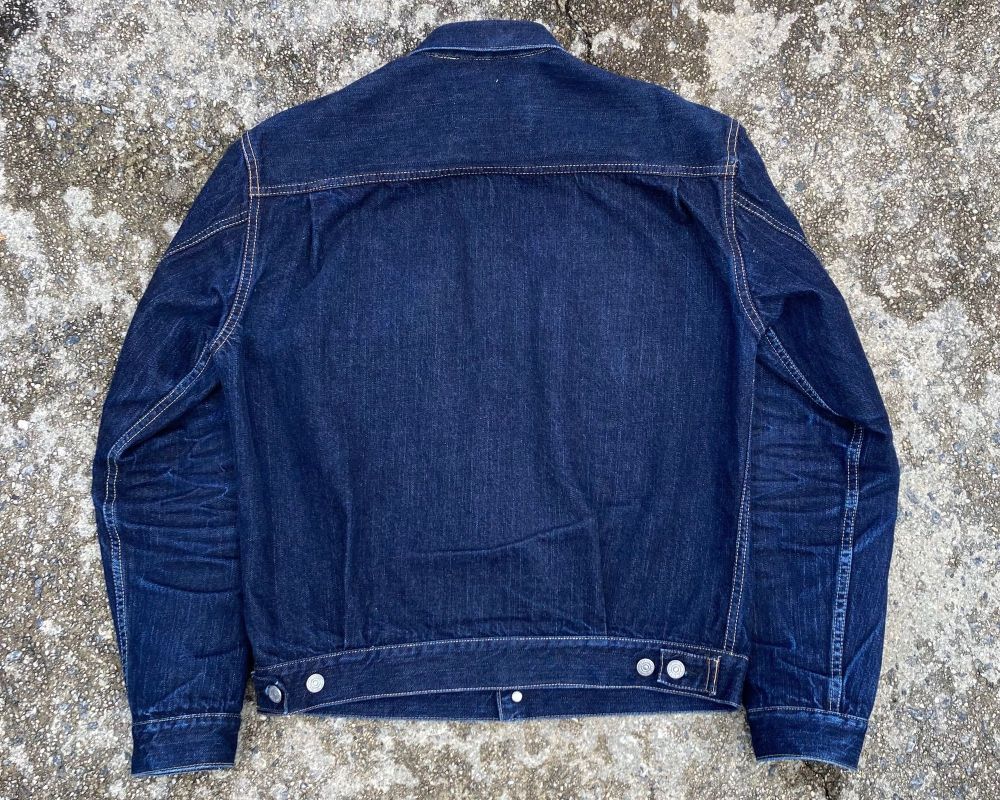
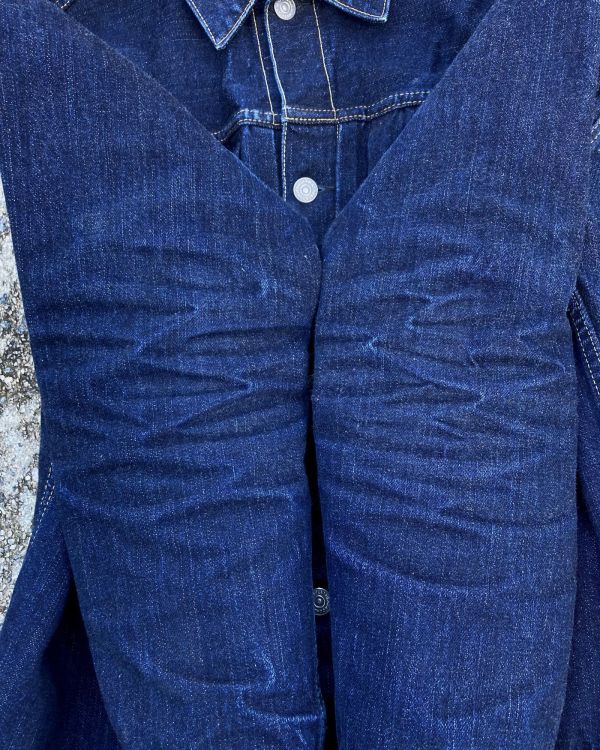
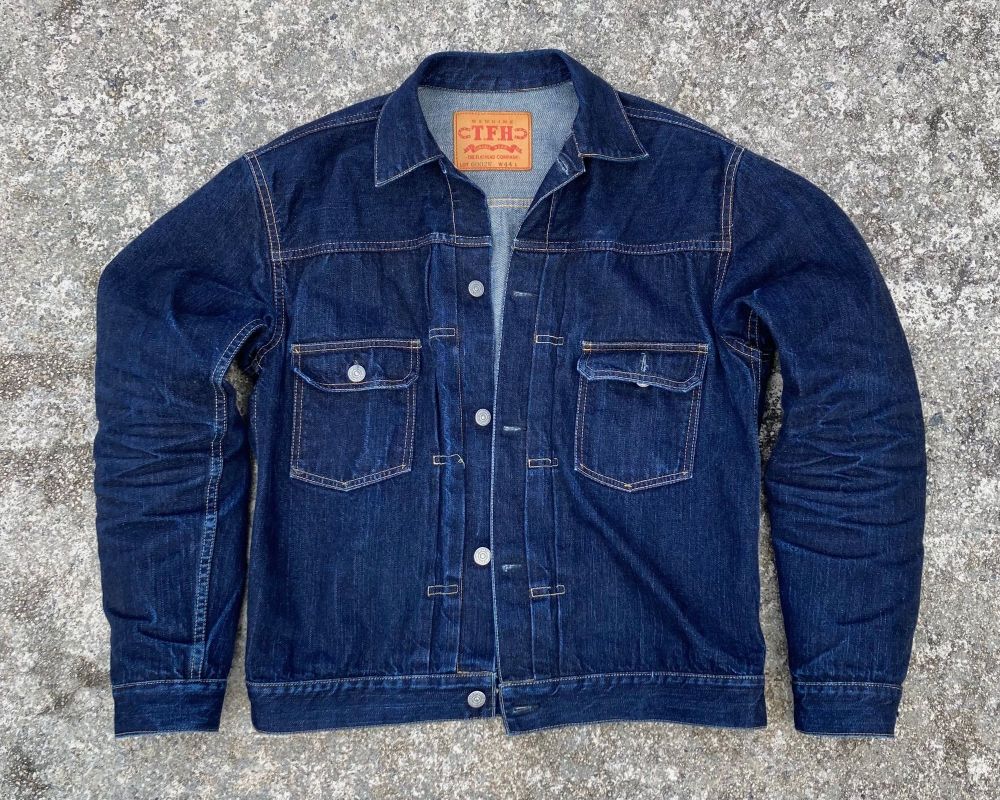
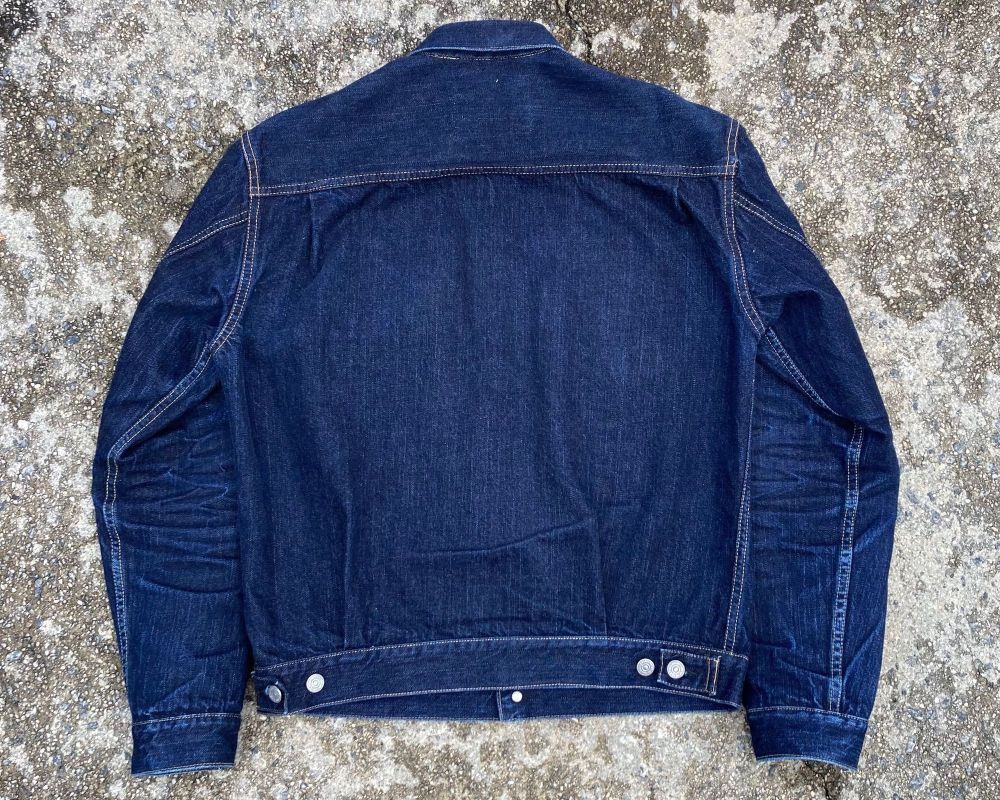
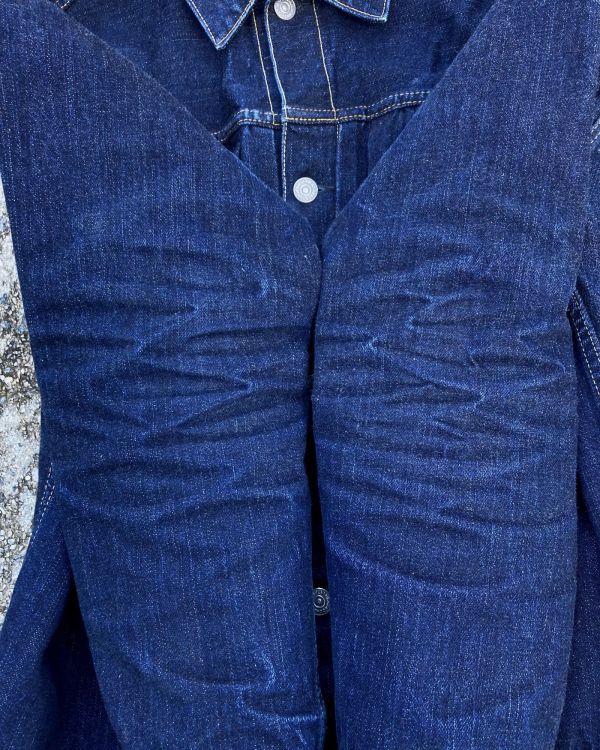
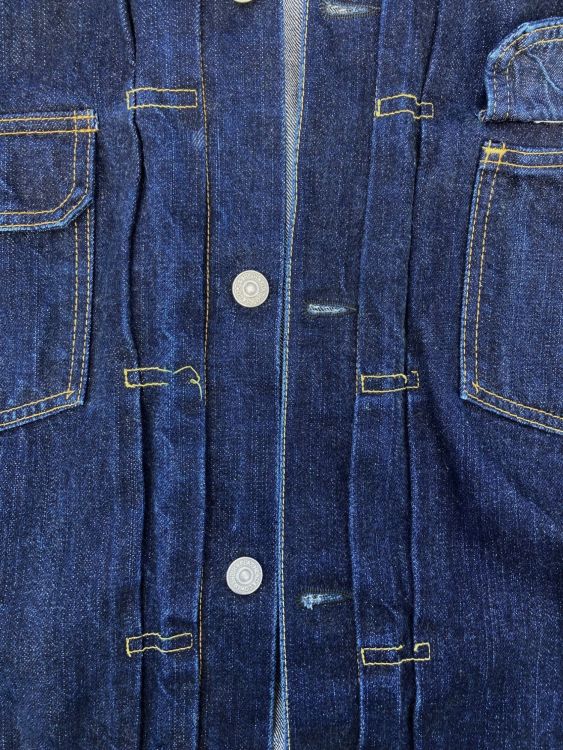
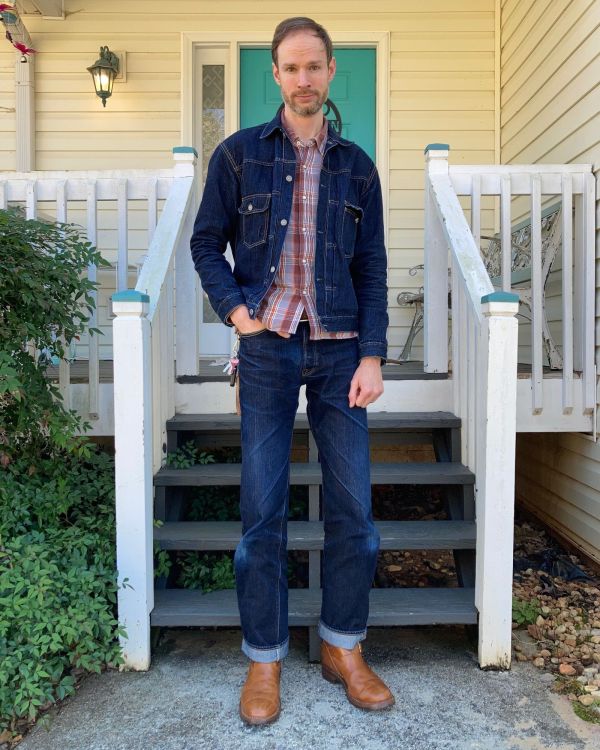
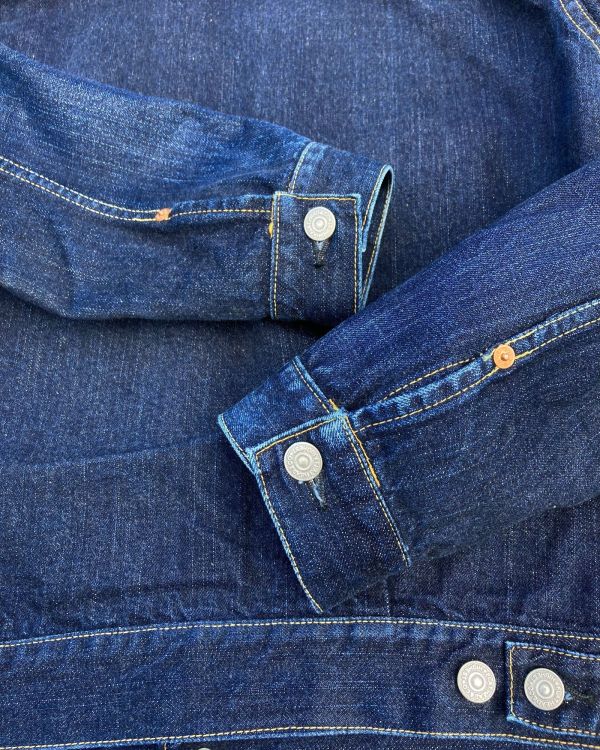
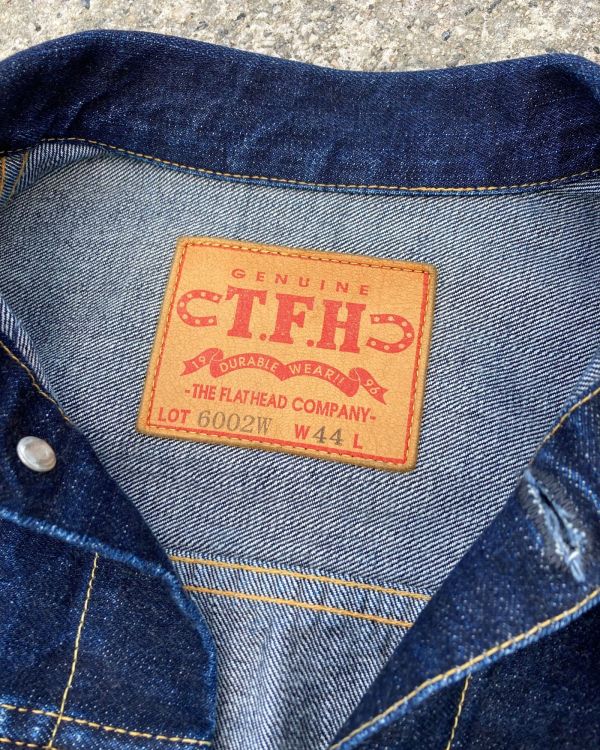
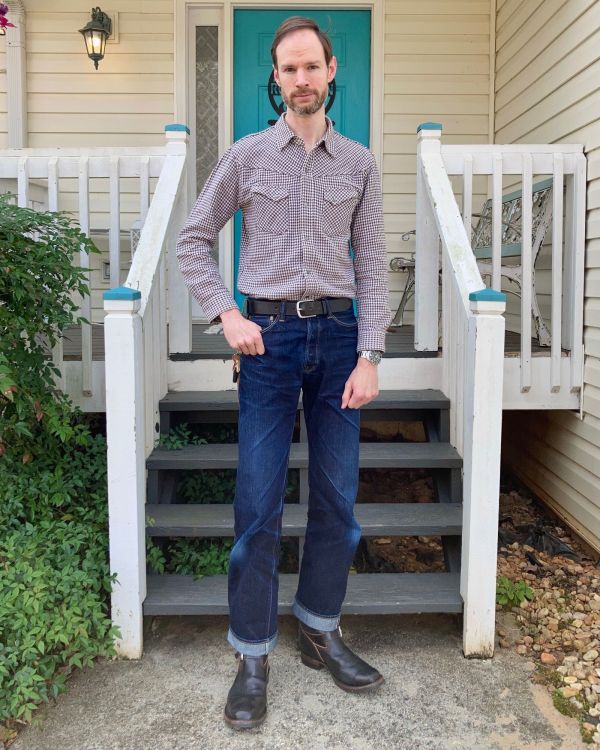
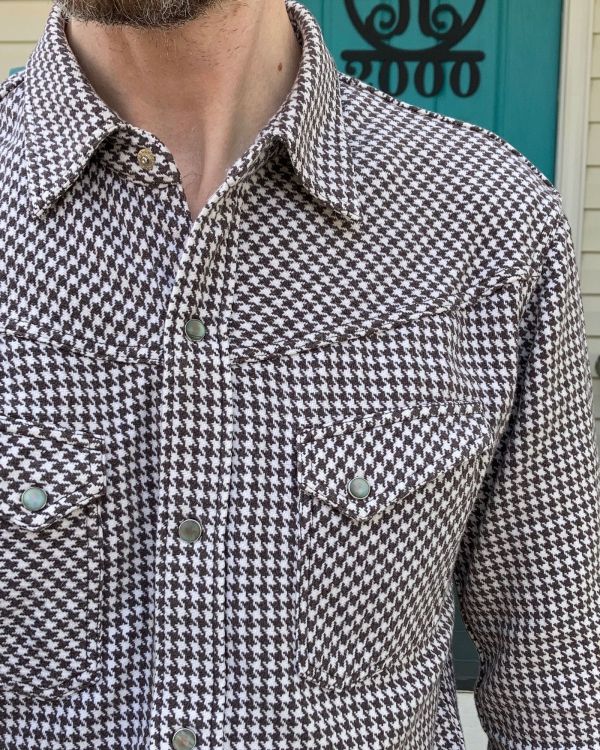
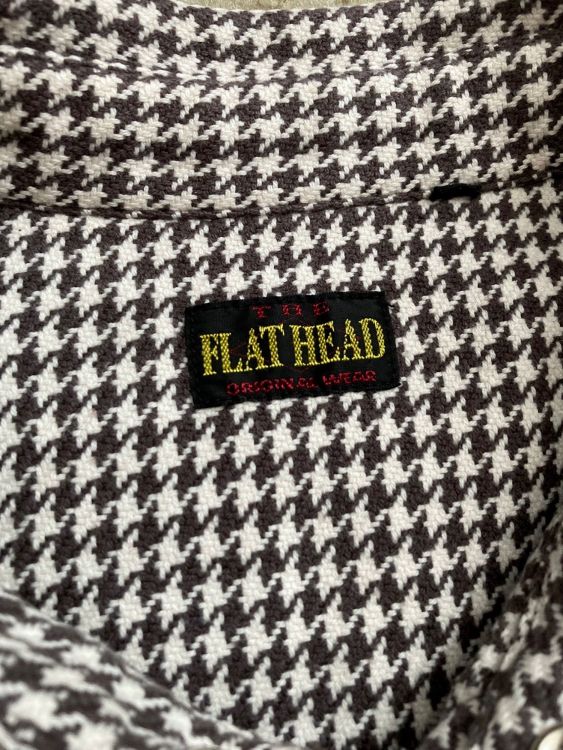
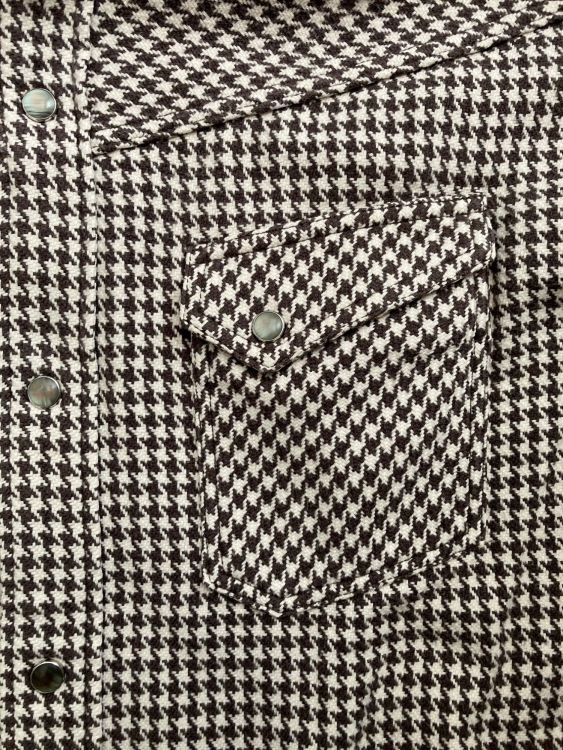
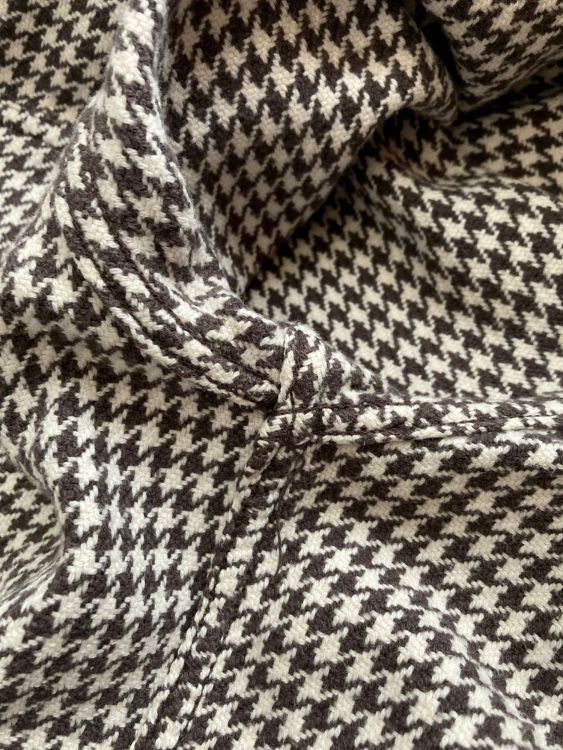
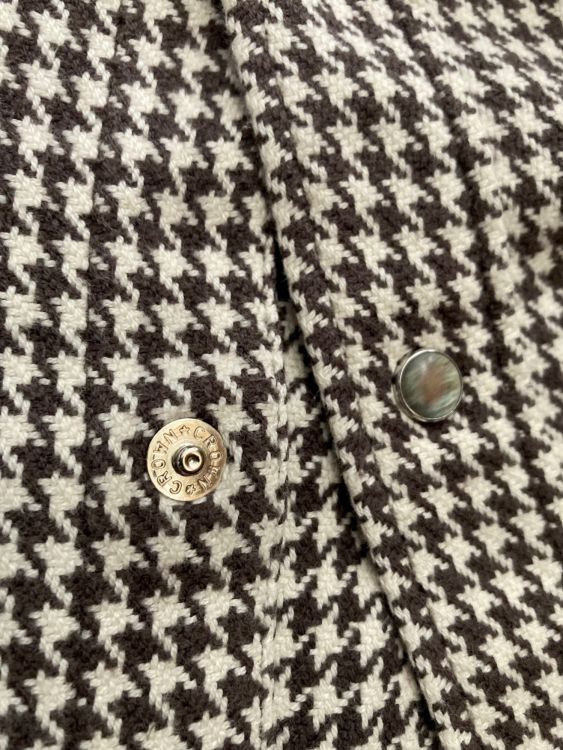
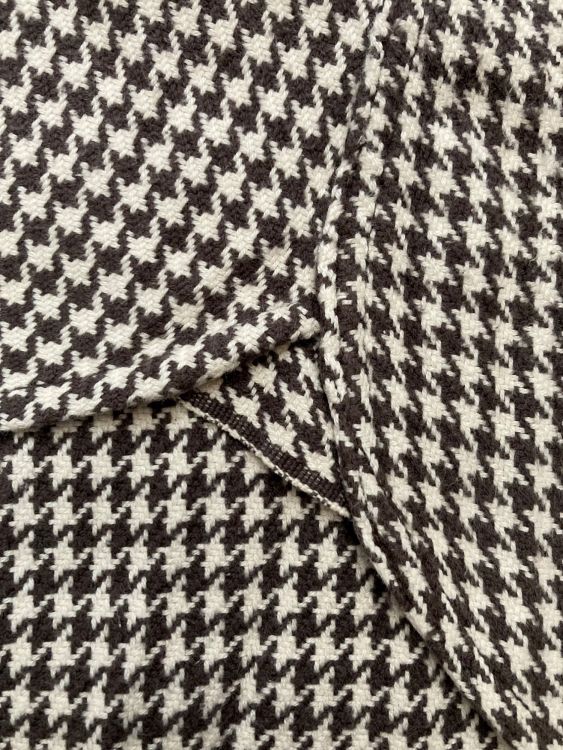
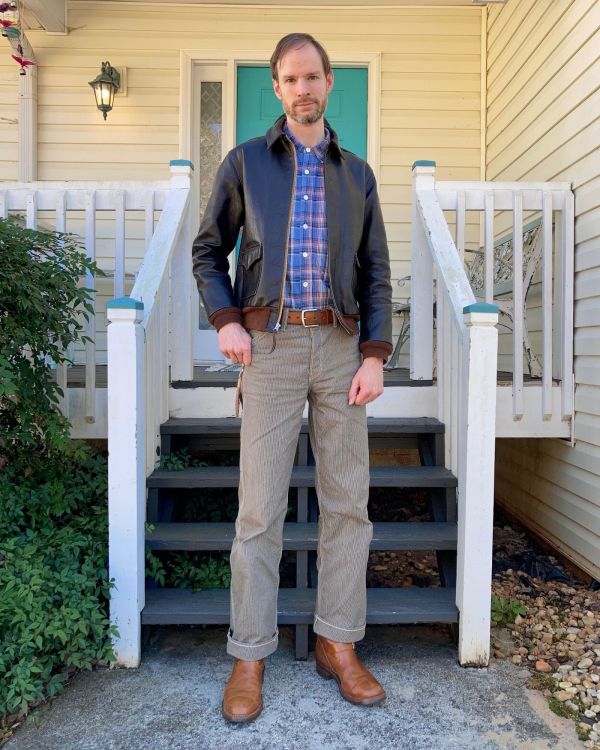
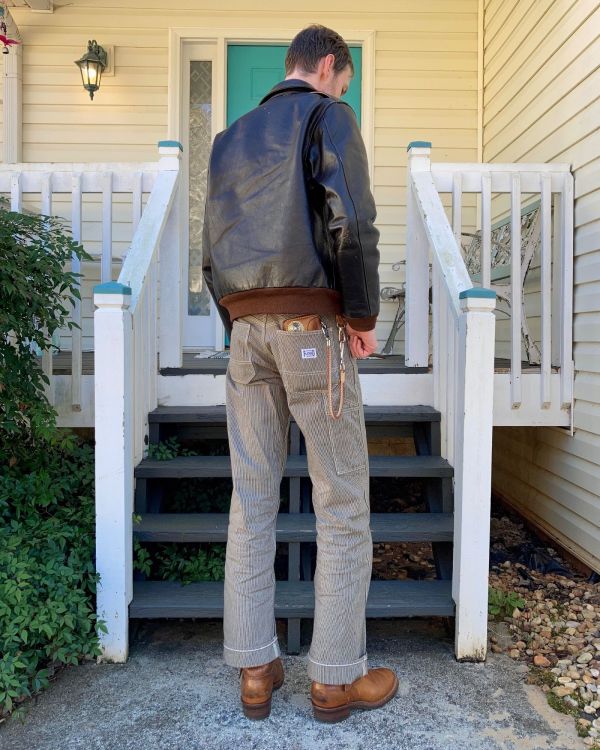
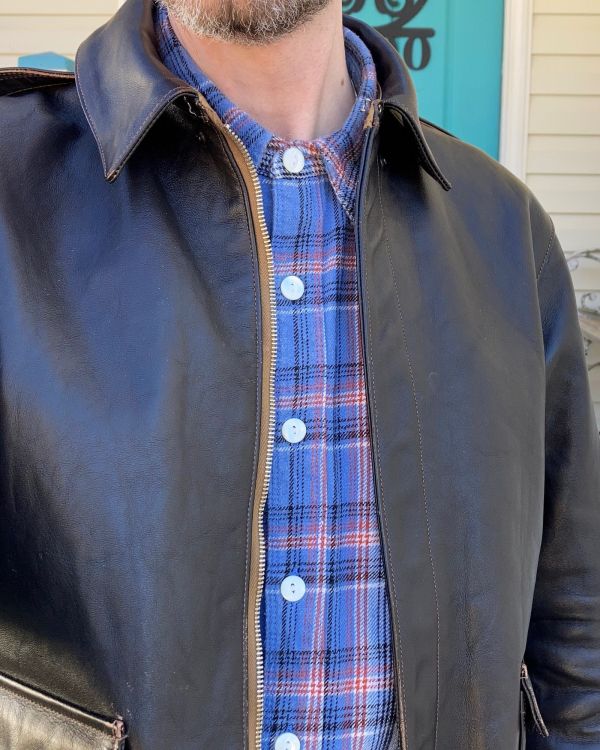
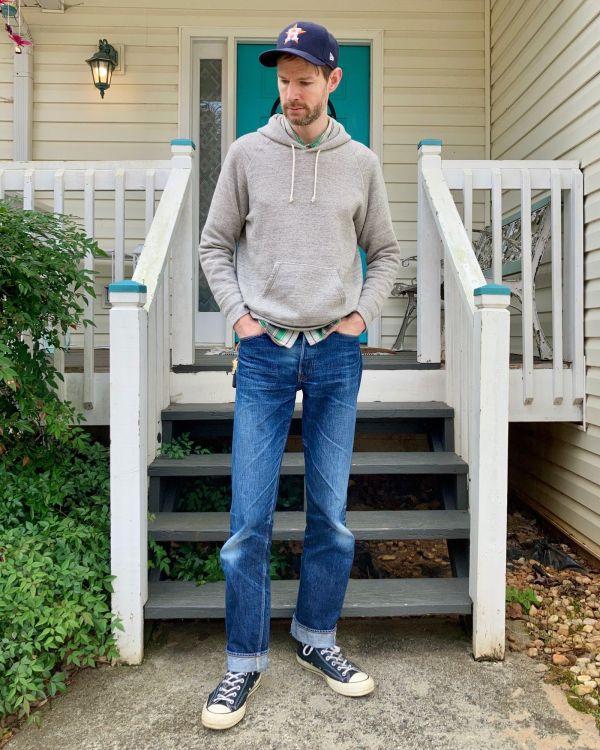
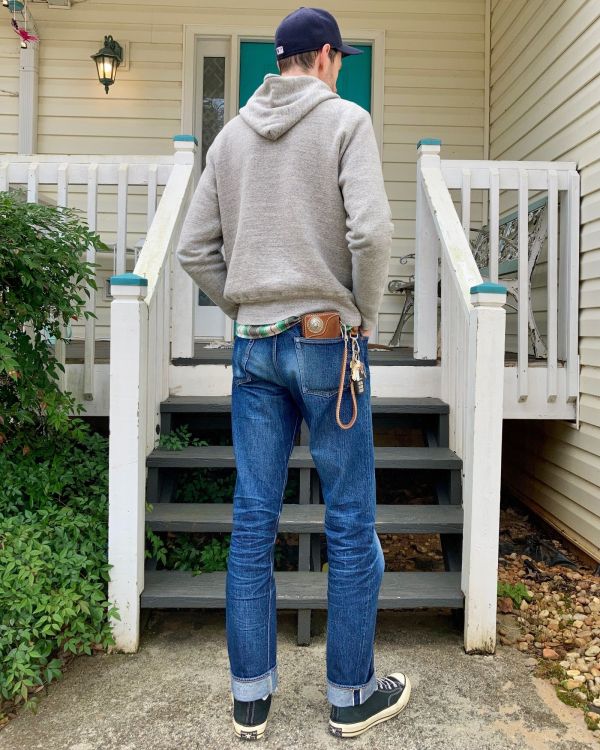
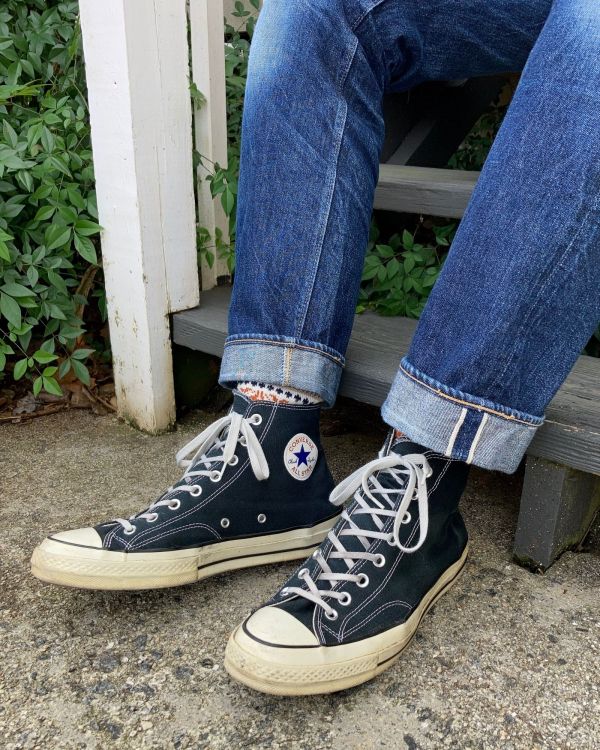













The Flat Head
in superdenim
Posted
Lovely fades on those! Yes, if a pair fits slim in the thighs sometimes you'll get a fade from the pocket bags, I had that happen on some of my very slim fitting pairs from "the early years" of denim nerdery.
I'm still trucking along in my 3005s, which are approaching eight months of real wear time. Once it really gets hot I'll probably wash and shelve these for a bit in favor of my Warehouse 1001xx, which are the best "hot weather" jeans I've worn, though I suspect they'll only make it another 2-3 months of wear before the knees and/or rear end wear through.
3005s aren't awful for summer once broken in, though. Hopefully I'll have managed some noteworthy fades in this pair by then.